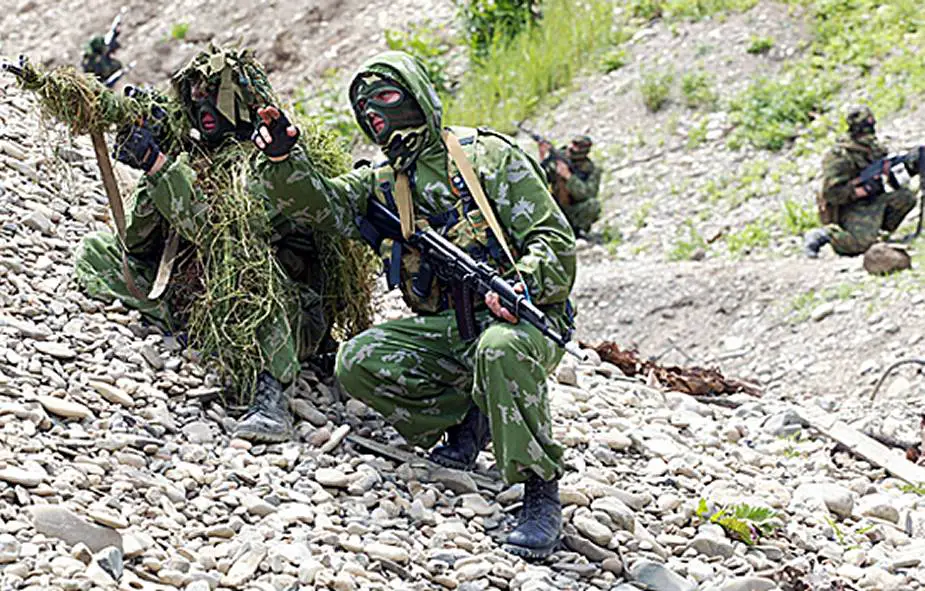Modern wars demand changing army reconnaissance – Part 1
The military activities are changing due to high-tech arms and hardware in the leading world armies. They change the character, structure and contents of the armed struggle. The main vectors of the changes include information technologies and asymmetric actions of the opposing parties. Reconnaissance is a major type of combat provision and has reached a development threshold, Colonel PhD Military Science Ye. Bezsudnov and Lieutenant-Colonel R. Gafarov write in the Voennaya Mysl (Military Thought) journal.
Follow Army Recognition on Google News at this link

The reconnaissance formations and military units are often put into the Special Forces of the Land Force and designed to perform a wide range of tasks in order to provide commanders, staffs and headquarters with information about the enemy, terrain and weather condition for making the most rational decisions on operation (battle) and preventing surprises of the enemy’s actions. (Picture source: Russian MoD)
Reconnaissance units operate a growing number of effective technical tools for navigation, communications, as well as outfit and arms to obtain objective data about the adversary. Information obtaining bodies operate in the whole depth of the theater of warfare and are an important element in collecting information about the position, strength, and the character of actions of the adversary and the location of its important objects.
At the tactical level, the role is fulfilled mostly by army reconnaissance. It has to provide the commander with the necessary information about the adversary and help make the most appropriate combat decision and order fire. Special reconnaissance units include well-trained scouts, who obtain information by various means.
As a rule, army reconnaissance units include a reconnaissance detachment, reconnaissance patrol, reconnaissance group, observation post and patrol detachment. Systemic analysis shows that the reconnaissance patrol and group are the basic units, as they both provide inferior units and create superior bodies. The patrol traditionally operates either in a detachment or independently in an important direction, while the group operates, as a rule, in the assigned area and rarely in a direction.
The reconnaissance depth of the basic units depends on two factors: communication capabilities and the responsibility zone of the army formation obtaining information. Instructions do not call on the detachment and group to provide independent units, however they can send an observation post or patrol detachment to fulfil the mission.
The Russian and foreign reconnaissance experience in modern conflicts and the growing capabilities of their weapons and tools call to consider short and midterm update of their structure, strength, and reconnaissance techniques. Various types and arms of the armed forces have been successfully engaged in reconnaissance-fire and reconnaissance-strike forces in conflicts of various intensity. The main condition is the provision of close to real-time information about adversary objects to command bodies and weapons. Analysis of open materials shows that the modern technical outfit of a scout in the leading world armies is constantly upgraded and potentially allows operating independently and fulfilling the complex mission for any command body or weapon.
Since the middle of the 20th century and up to now, observation, ambush, attack and search have been traditional methods to obtain reconnaissance information by tactical units. The experience of the Russian and world armies in modern conflicts shows that observation is the main technique. It is mostly due to various drones and optical-electronic multichannel tools mounted on masts that increase the reconnaissance depth.
They provide reconnaissance to a depth of 10-30 km and transmit target coordinates to command posts and weapons. In case of good terrain conditions, the spatial capabilities of an observation post expand from a 15-30-degree sector and a 4-km depth to round observation (360 degrees) in a radius of 5-10 km or in a restricted sector to a depth of 30 km.
Thus, the capabilities of an observation post are comparable to the potential of a patrol or group and can even exceed them in the pace of reconnaissance and survivability. The observation post spends less resources than a patrol to fulfil the mission. The cost of engaging the patrol and group with hardware, personnel and resources and their delivery to the reconnaissance area is much higher than a set of drones and optical-electronic multichannel automatic complex and the costs of training three-five scouts of the observation post.
© Copyright 2021 TASS / Army Recognition Group SPRL . All rights reserved. This material may not be published, broadcast, rewritten or redistributed.


























